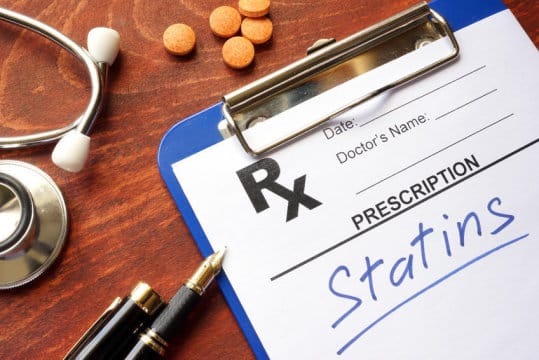“We wanted to look at who is using statins and why, and investigate the benefits in the people who are actually taking them, particularly those who have not got established heart disease where there is debate as to the usefulness of statins,” explains Paula Byrne, PhD, National University of Ireland Galway.
“Of those aged over 50 in this database, 30% were using statins — two thirds for primary prevention,” Byrne said. “Three quarters of women on statins were taking them for primary prevention compared with just over half of men. As so many people are taking statins for primary prevention, we need to be really clear of their benefits in this population.”
Looking for evidence to support the use of statins in primary prevention patients the effects of changes to the European guidelines on cardiovascular disease prevention from 1987-2016 were examined using data from a national cohort of older people residing in Ireland, applying the recommendation from various times over the past three decades to the cohort. According to the 1987 guidelines only 8% of this population was eligible for statins and by 2016 this increased to 61% were eligible for statins, which is a rather large increase.
“We found that although there have been many studies and meta-analyses of statin treatment there is little evidence separating out the primary and secondary populations,” Byrne noted.
Three systematic overviews were found reporting on primary prevention patients separately; two of these reviews were considered to be one dataset as they analyzed the same CTT Collaboration data, and two others by Mora et al and Ray et al. Data from adverse effects from some of the relevant studies was noted not to have been made available for independent analysis, and there is a high level of uncertainty as to what the harms are.
Based on 1994 guideline recommendations the number needed to treat (NNT) to prevent one cardiovascular event in the primary prevention population was 40, using the 2016 guidelines the number was found to be an NNT of 400. “So we are getting far less bang for our buck with the 2016 guidelines,” Byrne noted.
“Indeed, our analysis suggested that none of those classified as low or moderate risk in primary prevention would reach the levels of risk reduction that patients say would justify taking a daily preventive medicine,” the researchers write.
“Some clinicians and patients may desire a reduction in risk of cardiovascular disease, regardless of whether the benefit is small,” the authors write. “For others, the impact of potential adverse effects heavily influences their decision making, and even modest estimates of harms caused by daily medication could negate the benefits of statins.”
“The CTT estimates that for every 10,000 patients treated with statins for 5 years, there would be five cases of myopathy, 50 to 100 new cases of diabetes, and five to 10 hemorrhagic strokes,” Byrne said.
“Other data has suggested that frequency of myopathy is much higher — at about 530 cases per 10,000 patients treated for 5 years,” she added. “Also, myopathy is a high bar for defining muscle symptoms — what a person thinks is muscle pain probably is muscle pain. We need access to the data so it can be independently scrutinized to try and estimate this more accurately.”
Patients need to be able to make their own decisions on benefits and risks “But for that to be possible, we need better data on both the benefits and the harms in the primary prevention population. We also need more trials in low-risk individuals with sufficient power to look at subgroups such as women and older people where there is even more uncertainty. There needs to be more transparency around this uncertainty, which would empower both doctors and patients to make better decisions,” concludes Byrne.
“The conclusions are not surprising and align with what we know already, based on the evidence from numerous independent clinical trials,” says Metin Avkiran, MD, associate medical director at the British Heart Foundation.
“The evidence from clinical trials going back more than two decades shows that statins are an effective way of people reducing their risk of a heart attack. We already know that the benefits are even greater for people who have already had a heart attack or stroke,” he said.
“An important area of debate here relates to the magnitude of benefit provided by statin treatment in people who are at relatively low risk and whether that benefit outweighs the risk of side effects. For people who fall into this category, the decision on whether to take statins should be based on discussion with their GPs. We recognize people’s concerns about statin side effects and we want patients and their doctors to be able to make informed, evidence-based decisions about taking and prescribing these medicines,” said Ankiran.
“Putting an end to this debate should help to stop conflicting reports, which can put people off taking potentially life-saving drugs that they have been prescribed for good reason.”




